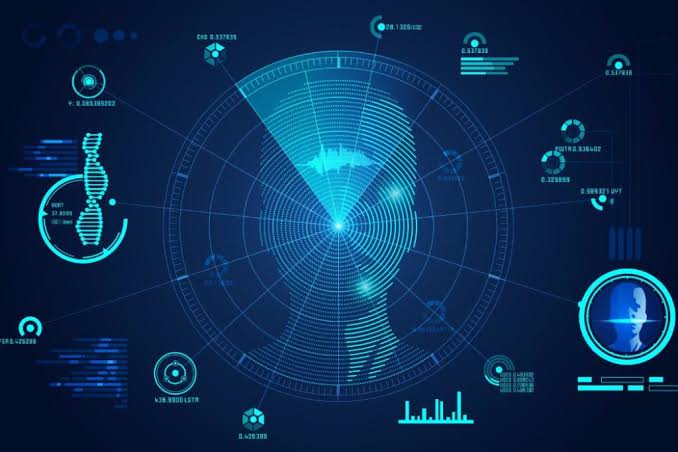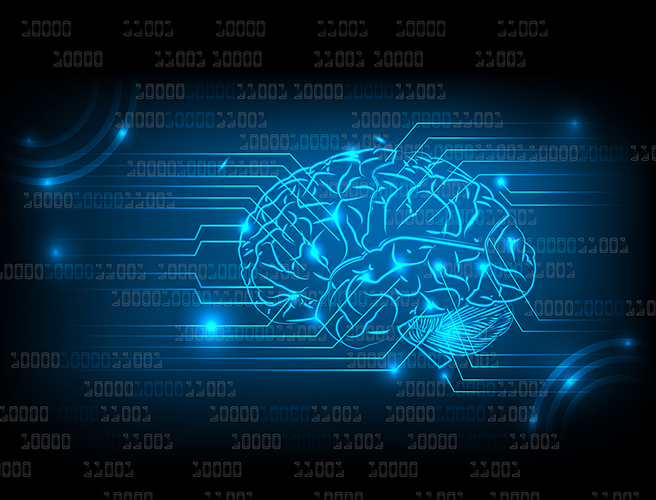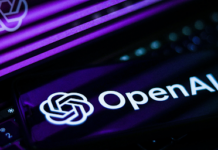The time has come when machine learning has started to reshape how we live, how we think and ultimately, how we behave. This and other factors like its possibilities in different sectors have brought us to understand what machine learning is, how it works and how it can impact our lives?
Machine Learning
Though it is often confused with artificial intelligence, the very basic definition of machine learning tells us that it is one of the most important parts of artificial intelligence and is not the AI as a whole. As the name suggests, machine learning helps a machine to learn from experiences similar to any humans without any explicit programming.
When exposed and trained with the right data, these applications grow, learn, change and develop themselves on their own. In simple words, machine learning consists of various algorithms that help computers learn by analyzing insightful patterns, information or trends from the data.
Going by history, it was first conceptualized during World War II with Enigma Machine which has the capabilities to automate the application of complex mathematical calculations. But, all the major breakthroughs in machine learning was achieved recently which made it an overnight sensation in various sectors.
But, the question is, “Why machine learning?”

Few scenarios or possibilities will definitely answer this question. Imagine a self-driving car where you don’t have to worry about multi-tasking; or a Netflix which gives you recommendations of your favourite shows with superb precision; or an online shopping website where you don’t have to search relevant products each time by typing in the search option, instead it will be recommended to you by observing your behavior.
Yes, all these things are possible and in fact, to some extent, it is being used where machines are made to filter useful pieces of information and then put together based on your patterns or behavior.
All these have been made possible all because of the recent discoveries made in machine learning along with the arrival of big data which have helped to increase the sophistication of machine learning. Big data indeed raised the problem of storing a large pool of data but since the problem is now mostly solved, the next task focuses more on data extraction, interpretation and analysis making it of utmost importance for machine learning.
How machine learning is different from artificial intelligence?
As said earlier, a lot of people confuse machine learning with artificial intelligence and often, both these terms are used interchangeably. In reality, AI & ML are 2 different things.
There is a big misconception that artificial intelligence or AI is a system but it is not and it is implemented in a system. The very basic definition of artificial intelligence is that “it is the study wherein programmers can train computers for doing things which generally humans do more better”. Just like deep learning, natural language processing, robotics and speech recognition, machine learning is also a subset of artificial intelligence.
Whereas, machine learning is a part of artificial intelligence that helps machines to learn by on its own without any programming just from its prior experiences.
The key differences between AI & machine learning are as follows:
- The aim of AI is to increase the chance of success and not accuracy; but in machine learning, accuracy is more focused.
- Artificial intelligence work as a computer program that does smart work, while machine learning is based on the simple concept of analyzing data.
- AI is more towards decision making and ML allow systems to learn new things from the data.
- AI involves creating a system which can mimic human in certain circumstances and ML involves creating self-learning algorithms.
Read More: AI and Machine Learning- How Does The Future Look?
Types of Machine Learning

Generally, there are three types of machine learning i.e. Supervised Learning, Unsupervised Learning and Reinforcement Learning but another type called Semi-Supervised learning has also joined the initial three.
It is said that almost 70 percent of machine learning is supervised learning while unsupervised learning accounts for 10-20% and other methods are used less.
Supervised Learning
It is implemented when programmers identify the input along with the outputs after which the algorithms are trained by using labels. This type of learning algorithms then receives an input sets with corresponding output for finding the errors. Based on these, the model gets modified accordingly.
It is a type of pattern recognition, as this type of learning uses different methods like prediction, classification, gradient boosting and regression. Then these patterns are used for predicting the values of the label on other unlabelled data. Supervised learning is majorly used in applications that include future prediction by using historical data like credit card frauds.
Unsupervised Learning
Contrary to supervised learning, unsupervised learning does not use historical data as a data set. It mostly focuses on finding a structure by exploring collected data and works best with transactional data. For instance, unsupervised learning can be used for segmenting customers and giving them specific attributes. It is often observed in content personalization.
Other popular techniques where unsupervised learning can be beneficial are nearest-neighbor mapping, k-means clustering, self-organizing maps and singular value decomposition. In more direct or simple words, it can be used for segmenting text topics, online recommendations and identifying data outliers.
Read More: Fundamentals Of Unsupervised Learning with Python
Semi-Supervised Learning
Going by its name, it is a bit of both i.e. supervised learning as well as unsupervised learning. Also, it uses both types of data for training i.e. labeled and unlabelled. In most cases, semi-supervised learning uses, a large amount of unlabelled data alongside a small amount of labeled data. Semi-Supervised Learning is used for prediction, regression and classification such as the face or voice-recognition applications.
Reinforcement Learning
In reinforcement learning, algorithms are used for discovering data through a process of trial and error. This type of machine learning then decides what action results in higher rewards. Its three major components are the agent, the environment and the actions. Here, the agent is the decision-maker or a learner, the environment is almost everything with which agents interact, and the actions are what the agent does after its interaction.
Popular Machine Learning Algorithms

Now, we will discuss the basic understanding of all the ideas behind the most popular algorithms of machine learning. Remember, we are not discussing all of them but only the trending and widely used ones.
Random Forests
It was devised in 2001 by Leo Breiman. It is the most simple but powerful algorithm that comprises a collection or an ensemble of independently trained decision trees. Here, in a decision tree, the whole data set is partitioned recursively into subsets along various branches. It results in grouping together similar observations at the terminal leaves. Furthermore, the partitioning at each split point is directed by the variable which can increase the purity of the tree. It results in grouping observations with the same target values. You can also follow the path of splitting rules through the tree to predict the target for any new observations.
One major problem with decision trees is that these are unstable and even a small change in training data can lead to wildly different trees. For this, a group of trees can be trained and ensembled for creating a model of “random forest” which leads to a more robust prediction.
You can also obtain a consensus for a predicted target value with a more generalized and robust model by ensembling or scoring new observations on several trees. It is highly effective, and because of this researchers have even formulated its variants like “deep embedding forests” and “similarity forests”.
Gradient Boosting Machines
XGBoost, a machine learning algorithm is considered a gradient boosting machine that is derived from decision trees. It was the late 90s when L Breiman observed a model that exhibited a certain level of error. He thought that error can serve as a base learner which can later be improved by adding models iteratively which can compensate for the error. Later this process was known as boosting.
Here for minimizing the error, each model is trained by searching the negative gradient direction thus “gradient boosting”. Based upon the results of previous models, new models are added which makes boosting a sequential process.
It was the year 2001 when J Friedman applied gradient boosting technique on a decision tree for creating Gradient Boosting machines. Another popular and effective approach called Adaboost by Saphire and Freund is one of its variant which uses an exponential loss function.
In the upcoming years, it was Tiangi Chen who successfully studied all the aspects and revisions of the gradient boosting machine algorithm. He further enhanced the performance with his implementation called “extreme gradient boosting” or XGBoost for short. It was also possible because of the fact that Chen took advantage of more easily available computing power with high speed and efficiency. Ultimately, his modifications to the use of quantile binning in the decision tree training. Further, the regularization term was added to the objective of supporting multiple forms of the loss function and improving generalization.
Support Vector Machines
It is one of the most popular toolboxes for machine learning practitioners from all over the world. A support vector machine or SVMs are present for several decades as it was first invented by V Vapnik and A Chervonenkis in 1963. It is generally a model of binary classification that constructs a hyperplane to separate observations into two classes.
In simple words, suppose you are given a plot of two different labels on a graph and you have to decide a separating line for the classes. The role of a support vector machine is to fairly separate the two classes by forming a line or a hyper-plane. SVMs are used for both regressions as well as classification challenges.
In complex plots, clearly a straight line cannot be used for the separation effectively so in that case, SVM uses a kernel function for mapping the data to a higher-dimensional space. This kernel trick and the penalty makes SVM a very powerful tool for classification and is also used for anomaly detection by using it in an algorithm as a support vector data description.
When it comes to its implementation, the scikit-learn library is a very popular and widely used library for implementing ml-based algorithms. You can use the same library for implementing support vector machines by following the same structure i.e. import library, then object creation which is followed by a fitting model and then prediction.
Despite being heavily used, SVMs have both pros and cons. For instance, it works well with a clear margin of separation. It is even effective when a number of dimensions are greater than the number of samples or in high-dimensional spaces and is also memory efficient. But in the case of large datasets, it doesn’t perform that good as the required training time is much higher. Also, it doesn’t perform effectively when there is a noise in a dataset.
Read More: Combining Support Vector Machines (SVMs)
Neural Networks
Though neural networks were developed in the 1950s, it has now become the poster child of machine learning, especially deep learning. It is the basic of any complex applications like image classification, speech-to-text or object detection. Though neural networks are very sophisticated but you won’t find any difficulties in the basic functioning of the neural network.
In a neural network, input data feeds through a network of nodes (called neurons) interconnected to each other which are also organized in layers when a set of mathematical transformations are applied. All these nodes are connected to the nodes present in the next layer and each connection is assigned to a weight that loosely represents a general significance of the input. Values are then made to travel through each node and while doing so these values are multiplied by the weight for the connection. After this, an activation function is applied and the resulting value of each node is then made to pass through the next nodes in the next layer via the network. For providing the prediction, an activation function in an output node assigns a value. Also, you should know that training any neural network is all depends upon finding the right values for the weights.
Because of the several neurons in each layer, usage of activation function and the ultra-flexibility in the combination of the number of hidden layers, these algorithms can provide extremely precise predictions for non-linear systems.
With understanding the basics of neural networks, now you can even explore its more advanced variants such as recurrent neural networks, convolutional neural networks and denoising autoencoders.
Read More: 6 Machine Learning Algorithms You Should Learn as a Newbie
The Use of Machine Learning In Real-Time

Some of the most typical applications of machine learning can be observed in real-time advertisements on mobile phones or web pages while surfing the internet, web search results, pattern or image recognition, network intrusion detection and email spam filtering. All these can be performed by analyzing massive chunks of data.
Other than these, machine learning can also provide a smart alternative for analyzing large volumes of data which earlier was based on trial and error. One can get highly accurate and precise results or analysis by using machine learning as you can develop efficient and fast algorithms. These data-driven models can process data in real-time.
Read More: Machine Learning For Sentiment Analysis (Using Python)
Wrap Up!
So, there you go! Though many people confuse machine learning with artificial intelligence, it is somehow different from AI. Today, machine learning has become an integral part of artificial intelligence which has the potential to transform various fields with the use of its different types of algorithms. I’ll hope that it was helpful and if you think we have missed something then don’t forget to write in the comment section below.
For Further Reading:









